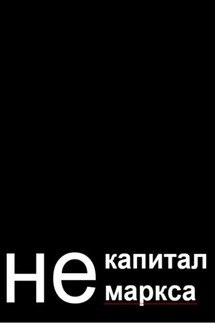The General Theory of Capital: Self-Reproduction of Humans Through Increasing Meanings - страница 22
Chapter 2. Simple production and necessary activity
1. Development of production from consumption
Agricultural evolution and increasing meanings
If Homo sapiens were simply a large mammal, like a wolf or a bear, its total population would not exceed several hundred thousand (Kapitsa 2009, p. 15). For example, the number of gray wolves in the world is about 300,000 individuals, the same number applies to chimpanzees. The transformation of man into a cultural being allowed him to exceed the limits set by nature. 100,000 years ago, 1 million people lived in the world. 10,000 years ago, when agricultural evolution began, 5 to 10 million people lived, and many of them depended on (semi-)domesticated animals and plants for reproduction. The further agricultural evolution advanced, the more people there were. At the turn of our era, there were about 250 million people living on Earth, most of whom were farmers and herders, not hunters and gatherers. At the beginning of the Industrial Revolution, the world’s population was about 1 billion people (Malanima 2009, pp. 1 ff.).
The accumulation of meanings first led to the separation of culture from nature. Subsequently, the same process led to the separation of production from consumption. Agricultural production arose approximately 10,000 to 12,000 years ago through the domestication of plants and animals. Neolithic evolution may have been a rapid event by Paleolithic standards, but by the standards of modern socio-cultural change it was a very slow, gradual development of a productive economy. Recent research suggests that domestication itself was a long process:
“First, it makes the identification of a single domestication event both arbitrary and pointless. Second, it reinforces the case for a very, very long period of what some have called ‘low-level food production’ of plants not entirely wild and yet not fully domesticated either. The best analyses of plant domestication abolish the notion of a singular domestication event and instead argue, on the basis of strong genetic and archaeological evidence, for processes of cultivation lasting up to three millennia in many areas and leading to multiple, scattered domestications of most major crops (wheat, barley, rice, chick peas, lentils)” (Scott 2017, p. 12).
There was no clear boundary, but rather a transition between foraging and agriculture, between food appropriation and food production. James Scott calls this transition “illegible” production (cf. Scott 2017, p. 33). “Illegible” production was characterized by two moments. First, meanings grew in objects, means of activity and the subject itself: plants, animals, and humans transformed from products of pure nature into products of human action. Second, the transition from hunting and gathering to herding and farming changed the rhythm and patterns of activity.
The advent of a relatively warmer and more stable climate at the beginning of the Holocene meant that in some areas, such as the Fertile Crescent region humans could reproduce without being nomadic. It became possible to obtain food by hunting, fishing, and gathering wild plants while remaining sedentary. The possibility of large seasonal food surpluses led to increased population density in areas with fish spawning grounds or natural grain fields. Seasonal food surpluses and the need to store food required long-term planning:







